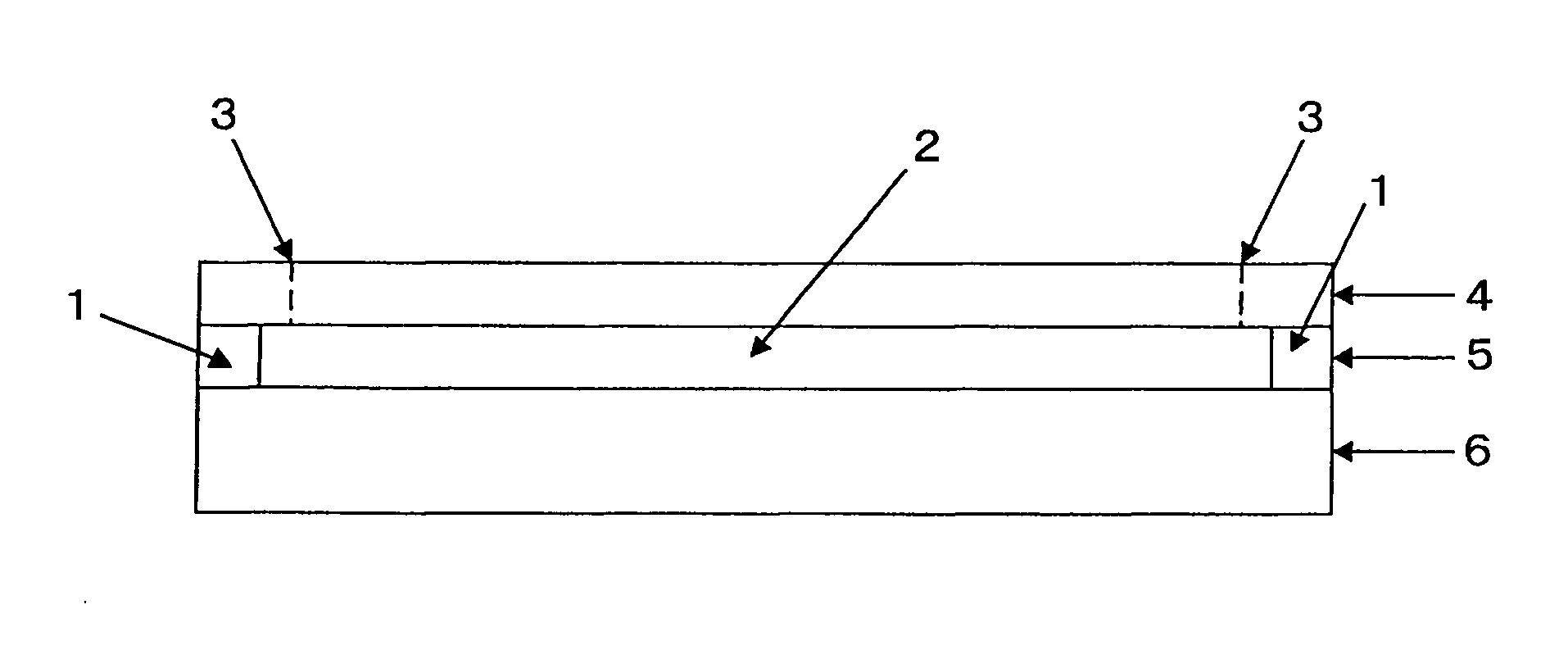Method for fixing plastic substrate, circuit substrate and method for producing same
- Summary
- Abstract
- Description
- Claims
- Application Information
AI Technical Summary
Benefits of technology
Problems solved by technology
Method used
Image
Examples
example 1
(A) Fixing Component Forming Step:
[0056]A silicone rubber monomer (Shin-etsu Chemical Industry's X-34-632T-A and B mixture) was applied onto a supporting substrate of glass (30 cm×50 cm, thickness 1 cm), and then gradually heated from room temperature up to 150° C. and heated in an electric oven for an hour, thereby polymerizing the silicone rubber. The thickness of the adhesive material layer thus formed on the supporting substrate was 300 μm, and the adhesive strength thereof was 6 newtons (N).
(B) Adhesive Strength Controlling Step:
[0057]Next, a metal mask was put on the adhesive material layer, and introduced into a dry-etching device, in which this was subjected to oxygen plasma treatment. The opening of the metal mask used herein was 24 cm×40 cm, and the mask was so set that its opening could be in the center of the supporting substrate of glass. The oxygen plasma treatment condition was as follows: The oxygen flow rate was 50 sccm, the pressure was 0.5 Torr, the power was 300 ...
example 2
[0065]In (A) of Example 1, a double-face adhesive tape of silicone-based adhesive (Teraoka Seisakusho's 760H#25) was applied to the supporting substrate of glass, in place of using the silicone rubber monomer. In this step, the double-face adhesive, from which the protective film on one surface had been removed, was stuck to the supporting substrate of glass. For bonding the two, the same vacuum thermal bonding device as in Example 1(C) was used under the same condition as therein. After thus bonded, this was taken out of the device, and the protective film on the other surface was removed. The adhesive strength of the supporting substrate was 8.8 newtons. Next, a metal mask was put on the adhesive material layer under the same condition as in Example 1(B), and put into a dry etching device, in which this was subjected to oxygen plasma treatment. The adhesive strength of the peripheral region on which the mask was put and the adhesive strength of the center part that had been expose...
PUM
| Property | Measurement | Unit |
|---|---|---|
| Force | aaaaa | aaaaa |
| Force | aaaaa | aaaaa |
| Pressure | aaaaa | aaaaa |
Abstract
Description
Claims
Application Information
 Login to View More
Login to View More - R&D
- Intellectual Property
- Life Sciences
- Materials
- Tech Scout
- Unparalleled Data Quality
- Higher Quality Content
- 60% Fewer Hallucinations
Browse by: Latest US Patents, China's latest patents, Technical Efficacy Thesaurus, Application Domain, Technology Topic, Popular Technical Reports.
© 2025 PatSnap. All rights reserved.Legal|Privacy policy|Modern Slavery Act Transparency Statement|Sitemap|About US| Contact US: help@patsnap.com


